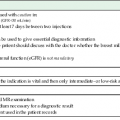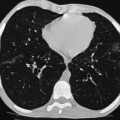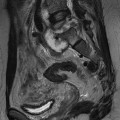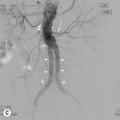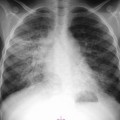Anthony Watkinson, Richard J. Morse
Venous Access and Interventions
The placement and maintenance of long-term vascular access catheters accounts for a considerable percentage of the workload of any interventional radiologist, particularly one who works in a large oncology or nephrology unit.
Long-term venous access is usually required for a few, relatively distinct, groups of patients:
Central access can be gained via either a central or, in certain circumstances, a peripheral vein; the latter is referred to as a peripherally inserted central catheter (PICC).
General Assessment of Patients before Vascular Access Procedures
Before approaching any vascular access case, certain haematological parameters must be checked. As the overwhelming majority of patients referred for access procedures will be elective or semi-elective, there should be time for any clotting abnormalities to be corrected before the commencement of intervention. Central venous access should not be undertaken with a platelet count of < 50 × 109/L, and if necessary a platelet transfusion should be arranged after discussion with the local haematology unit. Correction of an international normalised ratio (INR) of > 1.5 should also be performed, ideally with an oral dose of 1–5 mg of phytomenadione (vitamin K1). The INR measurement should be repeated 24 h later. If there are reasons why a patient cannot wait to have an abnormal INR corrected, then human fresh frozen plasma (FFP) can be administered; however, the prescription and usage of FFP must first also be discussed with the local haematology service.
There is less need to be concerned about abnormalities in clotting parameters when performing PICC lines, but common sense should be exercised. As part of the general pre-procedure, haematological and biochemical work-up, it is also good practice to know the patient’s haemoglobin level and glomerular filtration rate (GFR).
Any previous cross-sectional, venographic or ultrasonographic imaging must be reviewed before central access placement. This can alert the practitioner to any unusual anatomical features, the presence of implanted cardiac devices, any previously inserted and now removed long-term vascular access catheters and the presence or absence of venous occlusions.
Informed written consent must be obtained prior to central venous access, ideally in a situation removed in time and place from the interventional suite to allow appropriate consideration of the risks by the patient. The patient should be counselled for the risk of bleeding/haematoma, infection and pneumothorax.
General Patient and Interventional Suite Preparation for Central Venous Access
Strict asepsis must be observed and all staff should wear operating theatre hats and masks. Imaging requirements are a fluoroscopy suite and an ultrasound unit capable of colour Doppler imaging.
The patient should wear a hospital gown which unties at the neck and also an operating theatre hat. It is not essential that they have a peripheral cannula in situ; in many patients peripheral venous access will be very poor and the reason they have been referred for long-term vascular access. The patient should be placed supine on the fluoroscopy table with their head as close to the end of the table as possible. A pillow can be used to support the head and a wedge should also be placed under the knees, for patient comfort but also to help distend the chest and neck veins. Ultrasound examination of the preferred point of access should be undertaken. Usually, the right internal jugular vein (RIJV) is punctured, as it is easily assessed using ultrasound guidance, can be manually compressed in the event of bleeding and provides the most direct route to the superior vena cava/right atrial junction. Ultrasound imaging enables assessment of the venous anatomy and establishes whether the veins are patent and whether they contain thrombus.
The available instruments should include a standard sterile vascular procedure pack and a minor operations surgical set (including scissors, toothed and non-toothed forceps, artery forceps and a needle driver).
Insertion of Tunnelled Central Venous Catheter
Hickman Line
Once the interventional radiologist and any assistants have scrubbed, the patient’s skin should be prepared with an effective skin decontamination agent. Skin preparation should occur from the ipsilateral hairline posteriorly, the angle of the mandible superiorly, the suprasternal notch to the manubriosternal angle anteriorly and across to the lateral border of the ipsilateral pectoralis major laterally. The skin should then be draped; it is the authors’ practice to use a standard fenestrated angiographic drape. By placing the top of the fenestration 2–3 cm above the medial aspect of the right clavicle and extending the opening by 2–3 cm inferiorly it is possible to create a well-draped sterile field. The patient’s head is covered by the drape; patients are asked to look to their left and the left side of the drape at the head end is elevated on a stand to create a ‘tent’ under which they stay for the duration of the procedure.
Local anaesthetic is drawn up: 10 mL of 1% lidocaine/1 : 100,000 adrenaline is usually sufficient. The catheter is opened and both lumens are flushed and locked with 5 mL of 0.9% sodium chloride with 1000 IU of heparin. Care should be taken at this point to avoid touching the catheter; if necessary, the non-toothed forceps can be used to handle it.
A sterile ultrasound probe cover is fitted and the RIJV reassessed prior to guided local anaesthetic infiltration of the overlying skin and soft tissues. It is advisable to aim to puncture the vein as close to the clavicle as possible in order to avoid kinking of the catheter. A 5- to 10-mm transverse incision is made and a small pocket created using blunt dissection with the back of the scissors or the needle driver. Ultrasound-guided puncture (in the transverse plane) can then be performed with a standard 18-gauge one-part needle or with a micropuncture set. It is important to ensure that the tip of the puncture needle is always visible on ultrasound in order to reduce the risk of inadvertent carotid arterial puncture or transgression into the pleural cavity. A 10-mL syringe with 3 mL of 0.9% sodium chloride is fitted to the back of the needle and when RIJV puncture has been performed, aspiration on the syringe is undertaken to confirm correct needle placement. Once the RIJV has been punctured, the left hand holding the needle must remain fixed in position; this is easiest if one or two fingers of the left hand are balanced on the patient’s clavicle. The syringe can then be removed immediately followed by the insertion of an 0.035-inch J-wire. A prompt exchange reduces the risk of air aspiration into the vein. The wire is inserted and should run freely. If any difficulty is encountered when advancing the wire, the needle should be turned through 180° before another attempt is made to advance the wire. If this is unsuccessful the wire should be withdrawn and syringe aspiration on the needle should be performed to confirm correct positioning. When the wire has been inserted successfully, fluoroscopic guidance is utilised to confirm its passage through the right side of the heart into the inferior vena cava (IVC). It is not uncommon to encounter difficulty in exiting the right atrium with the wire preferentially passing through the tricuspid valve and into the right ventricle. If simple manoeuvres such as a breath-hold fail to help in exiting the right atrium, a 4 French (4Fr) multipurpose catheter can be used to guide the wire out of the heart.
Once the wire is safely in the IVC, the part outside the patient can be recoiled and fastened to the drape above the patient’s right shoulder. Local anaesthetic can then be infiltrated subcutaneously, starting approximately 5–6 cm inferior to the lower border of the right clavicle and continuing superiorly to meet the puncture site. In female patients it is advisable to aim for the catheter to exit as medially as possible to help avoid soft tissues pulling it inferiorly when the patient stands up; this is a less important consideration in thin male patients. Aesthetic considerations may need to be taken into account, especially in female patients who may wish to wear a V-neck style blouse and therefore would want the line exiting more laterally.
Stay updated, free articles. Join our Telegram channel

Full access? Get Clinical Tree


